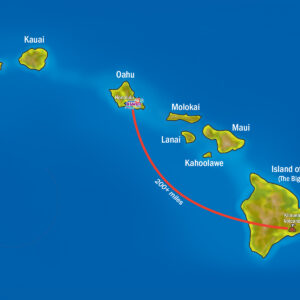Are you eager to witness the mesmerizing power of a volcano up close? Look no further than the captivating islands of Hawaii. With their stunning landscapes and remarkable geological features, Hawaii offers several opportunities for you to observe active volcanoes in action. From the world-famous Kilauea volcano in the Hawaii Volcanoes National Park to the awe-inspiring Mauna Loa volcano, the Big Island of Hawaii is the ultimate destination for volcano enthusiasts. Embark on an unforgettable adventure to experience the raw beauty of nature and witness the extraordinary forces that shape this remarkable archipelago.
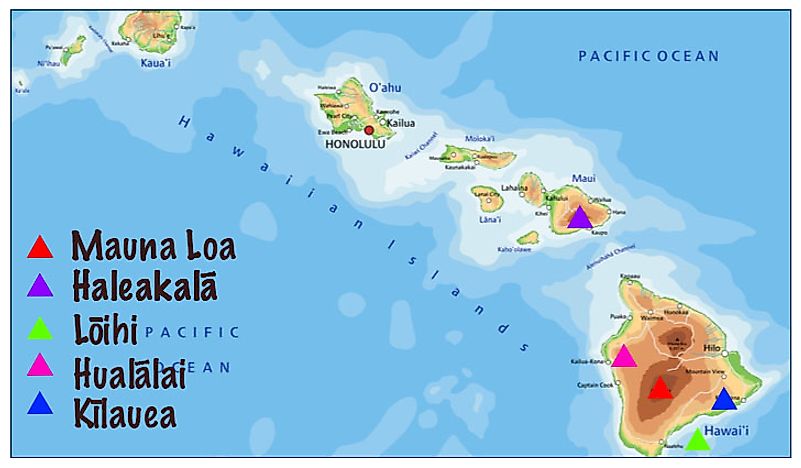
Types of Volcanoes in Hawaii
Hawaii is home to three main types of volcanoes: shield volcanoes, cinder cones, and stratovolcanoes. Each type has its own distinct characteristics and contributes to the unique landscape of the Hawaiian Islands.
Shield Volcanoes
Shield volcanoes, such as those found in the Hawaii Volcanoes National Park, are known for their gentle sloping sides and rounded shape, resembling a warrior’s shield. These volcanoes are formed by multiple thin layers of lava flowing from the central vent and spreading out in all directions. The lava is highly fluid, allowing it to travel long distances before solidifying. This type of volcanic activity results in the formation of large, broad shield-shaped mountains, with Mauna Loa being one of the largest shield volcanoes on Earth.
Cinder Cones
Cinder cones are the most common type of volcano found in Hawaii. These volcanoes are characterized by their steep slopes and conical shape, resembling an upside-down ice cream cone. They are formed by explosive eruptions that eject small fragments of lava, called cinders, into the air. As the cinders fall back to the ground, they pile up around the vent, forming a cone-shaped mountain. Cinder cones tend to be relatively small and are often found on the flanks of larger shield volcanoes.
Stratovolcanoes
Stratovolcanoes, also known as composite volcanoes, are characterized by their steep sides and symmetrical shape. They are formed by alternating layers of lava, ash, and rock fragments. Stratovolcanoes are known for their explosive eruptions and can produce powerful pyroclastic flows and lahars (mudflows). Mauna Kea, one of the tallest mountains in Hawaii, is an example of a stratovolcano.
Volcanoes on the Big Island of Hawaii
The Big Island of Hawaii is home to several active and dormant volcanoes, each offering a unique experience for visitors.
Kilauea
Kilauea is one of the most active volcanoes in the world and has been erupting continuously since 1983. It is famous for its lava flows, which have shaped the landscape of the Hawaii Volcanoes National Park. Visitors can witness the power of nature by exploring the lava fields and visiting the Kilauea Caldera. However, it is important to note that volcanic activity can be unpredictable, and certain areas of the park may be closed for safety reasons.
Mauna Loa
Mauna Loa is the largest volcano on Earth and is one of the five volcanoes that form the Island of Hawaii. Although Mauna Loa has been dormant since its last eruption in 1984, it is still considered an active volcano. The summit of Mauna Loa offers stunning panoramic views of the surrounding landscape, and visitors can hike along the Mauna Loa Trail to gain a deeper appreciation for the volcano’s geological history.
Hualalai
Hualalai is located on the western coast of the Big Island and is considered one of the most active volcanoes in Hawaii. Although it has not erupted in over 200 years, Hualalai poses a potential threat to the surrounding communities. Visitors can explore the volcano’s lower slopes and enjoy the picturesque beaches that line its coastline.
Mauna Kea
Mauna Kea is the highest volcano in Hawaii, reaching an elevation of over 13,000 feet. Unlike the other volcanoes on the Big Island, Mauna Kea is dormant and has not erupted in thousands of years. The summit of Mauna Kea is home to world-renowned observatories, offering stargazers a unique opportunity to observe the night sky at one of the best astronomical viewing sites on the planet.
Kohala Volcano
Kohala Volcano is the oldest volcano on the Big Island and is considered dormant, with its last eruption occurring around 120,000 years ago. Despite its age, Kohala Volcano offers breathtaking views and is home to some of the island’s most beautiful beaches, making it a popular destination for tourists.
Explore Uncharted Hawaiian Destinations
Volcano National Parks
Hawaii Volcanoes National Park is a must-visit destination for anyone interested in volcanoes and the natural beauty of the Hawaiian Islands. The park offers a range of activities and attractions that showcase the power and beauty of volcanic activity.
Hawaii Volcanoes National Park
Hawaii Volcanoes National Park encompasses the active volcanoes of Kilauea and Mauna Loa. Visitors can explore a variety of hiking trails, scenic drives, and overlooks that provide breathtaking views of the volcanoes and the surrounding landscapes. The park also features educational exhibits and ranger-led programs that offer insight into the geological processes at work.
Puu Oo Trail
Puu Oo Trail is a popular hiking trail within Hawaii Volcanoes National Park. The trail takes visitors through a diverse range of volcanic landscapes, including lush rainforests, lava tubes, and barren lava fields. Hikers can witness the power of the volcano up close and personal, as well as encounter unique flora and fauna along the way.
Kilauea Iki Trail
The Kilauea Iki Trail offers a unique hiking experience through the heart of a dormant crater. The trail takes you across a lava lake that was active in 1959, providing an opportunity to witness the aftermath of an eruption. The hike offers incredible views of the surrounding lava landscape and provides a sense of the immense power that lies within the Earth’s crust.
Thurston Lava Tube
The Thurston Lava Tube is a unique geological feature formed by flowing lava. Visitors can explore this underground tunnel, walking through a dark and damp environment that gives a glimpse into the volcanic history of the area. The cool temperatures inside the lava tube also offer a refreshing break from the heat outside.
Chain of Craters Road
Chain of Craters Road is a scenic drive that takes visitors through Hawaii Volcanoes National Park and offers breathtaking views of the volcanic landscapes along the way. The road is dotted with overlooks and pullouts, allowing visitors to stop and marvel at the vast lava fields, steam vents, and lava flows that have shaped the area over thousands of years.
Volcano Tours and Helicopter Rides
For those looking for a unique perspective on Hawaii’s volcanoes, helicopter tours and guided tours offer an unforgettable experience.
Hawaii Helicopter Tours
Hawaii Helicopter Tours provide a bird’s-eye view of the volcanic landscapes, taking passengers over lava fields, active vents, and cascading waterfalls. From the air, you can witness the sheer scale and power of the volcanoes, offering a perspective that is impossible to achieve from the ground.
Hawaiian Epicurean Adventure Tours
Hawaiian Epicurean Adventure Tours offer a different kind of volcano experience, combining the thrill of exploring the volcanoes with the opportunity to sample local cuisine. These guided tours take visitors to volcanic sites, where they can witness the unique growing conditions for crops such as coffee and macadamia nuts. Additionally, guests can enjoy a gourmet meal showcasing the flavors of the region.
Hawaii Jeep Tours
Hawaii Jeep Tours provide an adventurous and off-road experience for visitors who want to explore the volcanic landscapes at their own pace. With a knowledgeable guide leading the way, participants can journey through rugged terrain, visit hidden lava caves, and witness the raw power of the volcanoes up close.
Hawaii Volcano Tours
Hawaii Volcano Tours offer a variety of guided tours that cater to different interests and preferences. From hiking tours that take you deep into the heart of the volcanic landscape to helicopter tours that provide a panoramic view from above, there are options available for everyone. These tours are led by certified guides who provide informative commentary about the volcanoes’ history, geology, and cultural significance.
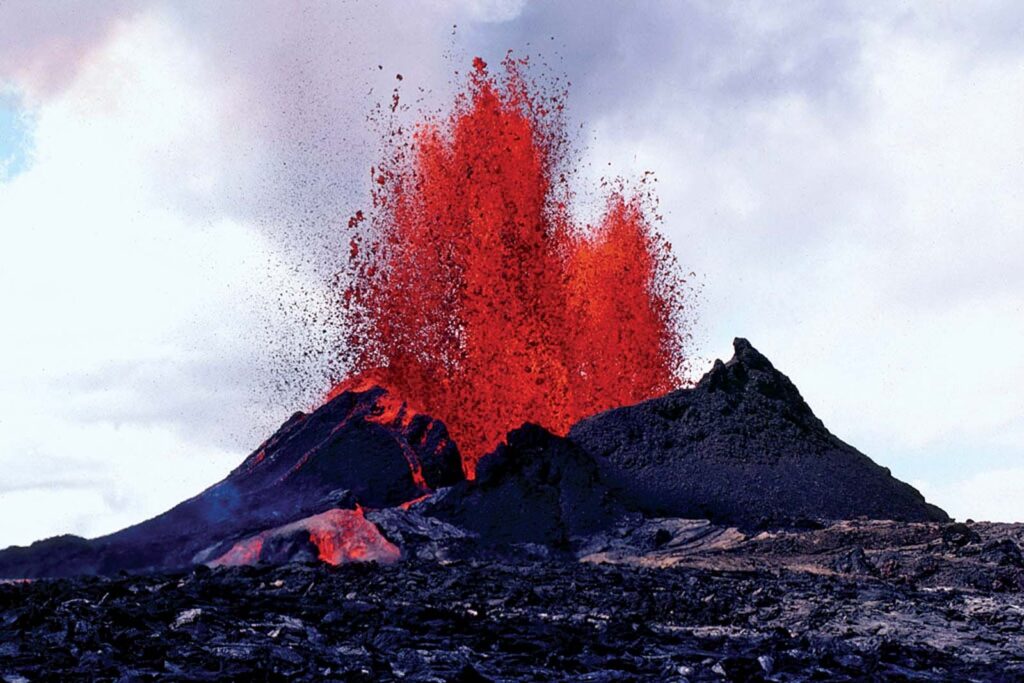
Plan Your Dream Hawaiian Getaway
Observatories and Viewing Centers
To gain a deeper understanding of the volcanoes and their impact on the scientific community, visitors can explore observatories and viewing centers.
Jaggar Museum
Jaggar Museum, located within Hawaii Volcanoes National Park, offers a fascinating insight into the world of volcanology. Visitors can learn about the history of volcanic eruptions in Hawaii, view interactive displays, and witness live volcanic activity through telescopes and cameras. The museum also provides information on the cultural significance of the volcanoes to the Hawaiian people.
Halema’uma’u Crater
Halema’uma’u Crater is located within the Kilauea Caldera and offers a front-row seat to volcanic activity. Visitors can witness the volcanic gases escaping from the crater and marvel at the billowing plumes of steam and sulfur dioxide. The overlook provides a safe viewing point, allowing visitors to observe the power of the volcano from a distance.
Kilauea Visitor Center
The Kilauea Visitor Center serves as a hub for information and resources related to the volcanoes of Hawaii. Visitors can obtain maps, brochures, and up-to-date information on hiking trails, road closures, and current volcanic activity. The center also features exhibits that highlight the geological processes at work and the cultural significance of the volcanoes.
Kilauea Overlook
The Kilauea Overlook offers a panoramic view of the Kilauea Caldera, providing visitors with a breathtaking visual of the volcanic landscape. From this vantage point, you can see the steam rising from the crater and the surrounding lava fields. The overlook is a great spot to take in the beauty and magnitude of the volcanoes in a peaceful and serene setting.
Haleakala National Park
Although not located on the Big Island, Haleakala National Park on the island of Maui offers a unique volcanic experience. Haleakala is home to the dormant Haleakala Volcano, which last erupted in the late 1700s. The park features numerous hiking trails that take visitors through the volcanic landscape, as well as the opportunity to witness a stunning sunrise or sunset from the summit.
Exploring Volcano Craters and Lava Fields
For those who crave a more hands-on experience, exploring volcano craters and lava fields provides an up-close encounter with the raw power of the Earth’s volcanic activity.
Halema’uma’u Crater
Halema’uma’u Crater, located within Hawaii Volcanoes National Park, offers a unique opportunity to explore the aftermath of volcanic activity. Visitors can hike along the crater’s rim and witness the barren landscape, with steam vents and sulfur deposits scattered throughout. The hike provides a humbling experience, showcasing the destructive yet awe-inspiring force of nature.
Pu’u O’o Vent
The Pu’u O’o Vent, located on the eastern rift zone of Kilauea, is another fascinating destination for volcano enthusiasts. This vent has been erupting since 1983, continuously spewing lava into the surrounding landscape. Visitors can witness the ongoing eruption by hiking to the edge of the vent, experiencing the intense heat and witnessing the creation of new land firsthand.
Chain of Craters Road
Chain of Craters Road offers a unique opportunity to drive alongside ancient lava flows and witness the different stages of volcanic activity. The road takes visitors through a diverse range of landscapes, from lush rainforests to barren lava fields. Along the way, you can stop at various viewpoints and witness the dramatic contrast between the vibrant green vegetation and the rugged black lava.
Pu’u Huluhulu Trail
The Pu’u Huluhulu Trail is a moderate hiking trail that takes visitors through a variety of volcanic landscapes, including lava fields, towering cinder cones, and dense rainforests. The trail offers breathtaking panoramic views of the surrounding area and provides a sense of the power and beauty of Hawaii’s volcanic activity.
Holei Sea Arch
The Holei Sea Arch is a unique geological feature that highlights the erosive power of the ocean against the volcanic coastline. Formed by centuries of pounding waves and volcanic activity, the arch offers a striking sight and is a popular spot for photographers. Visitors can witness the raw interactions between the land and the sea, showcasing the ever-changing nature of the volcanic landscape.
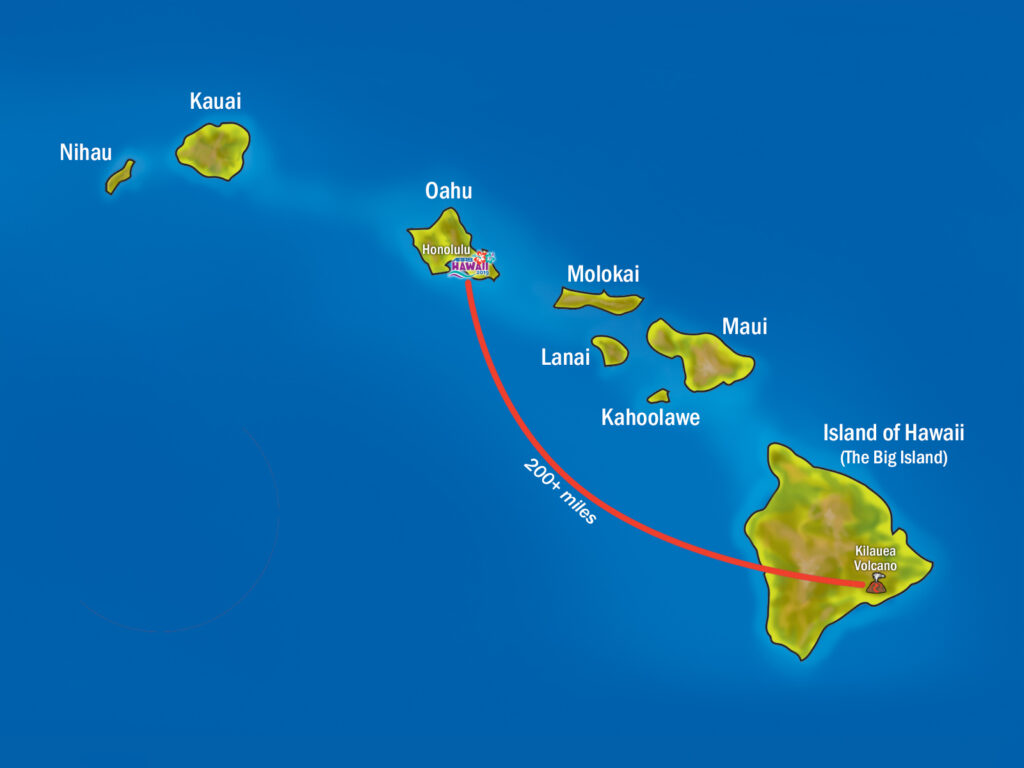
Experience Hawaii’s Unique Attractions
Boat and Lava Ocean Adventures
For a truly immersive experience, boat and lava ocean adventures offer a chance to witness the volcanic activity from the water.
Lava Ocean Tours
Lava Ocean Tours provide a thrilling experience for visitors by taking them close to the active lava flows via boat. As the boat approaches the lava, passengers can witness the molten rock meeting the ocean, creating steam and dramatic plumes. This unique perspective allows visitors to see the fiery spectacle up close and personal, offering an unforgettable experience.
Kalapana Lava Boat
Kalapana Lava Boat Tours offer a similar experience, taking visitors on a guided boat tour to witness the lava pouring into the ocean. The tour provides a unique opportunity to witness the volcanic activity from a safe distance, while also learning about the geology, ecology, and cultural history of the area.
Hilo Lava Boat Tours
Hilo Lava Boat Tours offer a different perspective on volcanic activity, taking visitors through Hilo Bay and along the rugged volcanic coastline. The tour provides an opportunity to witness the power of the ocean as it interacts with the volcanic landscape, showcasing the constant interplay between land and sea.
Hawaiian Style Seafaris
Hawaiian Style Seafaris offer a range of boat tours that cater to different interests. From snorkeling adventures to dolphin and whale watching trips, there are options for everyone. These tours provide a unique vantage point for witnessing the volcanic activity, as well as an opportunity to explore the marine life and natural beauty of Hawaii’s waters.
Visiting Volcanic Beaches
In addition to exploring the volcanic landscapes, visitors can also enjoy the unique volcanic beaches that dot the coastline of the Big Island.
Pohoiki Black Sand Beach
Pohoiki Black Sand Beach is a popular destination for both locals and tourists. The beach gets its distinctive black sand from the volcanic activity that has shaped the island. Visitors can relax on the dark sands, take a dip in the ocean, or even try their hand at surfing in the nearby surf breaks.
Kehena Black Sand Beach
Kehena Black Sand Beach is another beautiful volcanic beach known for its unique black sand and scenic beauty. The beach is nestled between dramatic cliffs and offers a quiet and secluded atmosphere, perfect for those looking to escape the crowds.
Kapoho Tide Pools
Kapoho Tide Pools provide a unique opportunity for snorkeling and swimming in protected natural pools created by lava formations. The pools are home to an abundance of marine life and offer crystal-clear waters, making it an ideal spot for exploring the underwater world and witnessing the unique ecosystem of the volcanic coastline.
Ahalanui Hot Pond
Ahalanui Hot Pond is a geothermally heated pool located near Pahoa. The pool is fed by warm spring water, creating a relaxing and rejuvenating experience for visitors. The natural heat comes from the volcanic activity beneath the surface, making it a unique destination for those looking to unwind and enjoy the healing properties of the warm water.
Isaac Hale Beach Park
Isaac Hale Beach Park, also known as Pohoiki Beach Park, offers a range of recreational activities for visitors. The park features a black sand beach, picnic areas, and shallow waters suitable for swimming and snorkeling. Additionally, the park serves as a launching point for boat tours to witness the nearby volcanic activity, providing a convenient and accessible location for volcano enthusiasts.
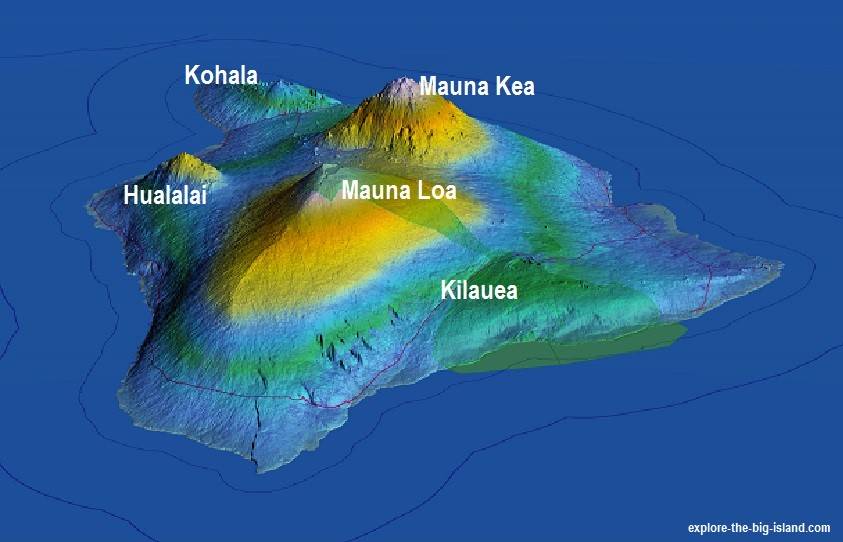
Volcano Safety and Guidelines
While visiting Hawaii’s volcanoes can be an exciting and awe-inspiring experience, it is important to prioritize safety and follow guidelines to ensure both personal well-being and the protection of the environment.
Volcano Hazard Zones
Hawaii’s volcanoes can be unpredictable, and it is important to be aware of the various hazard zones associated with volcanic activity. These zones are categorized based on the likelihood and severity of hazards, such as lava flows, volcanic gases, and ashfall. It is crucial to stay informed about current conditions and adhere to any warnings or closures implemented for safety reasons.
Safety Tips and Precautions
When visiting volcanic areas, it is important to follow safety tips and guidelines to minimize the risk of injury or harm. This includes staying on marked trails, avoiding restricted areas, and heeding any warnings or guidance from park rangers and local authorities. It is also essential to stay aware of weather conditions, wear appropriate footwear and clothing, and carry necessary supplies such as water, sunscreen, and insect repellent.
Guided Tours and Local Experts
To ensure a safe and educational experience, it is advisable to participate in guided tours led by certified guides or local experts. These individuals have extensive knowledge and experience navigating the volcanic landscapes and can provide valuable insights into the geological processes and cultural significance of the area. They are also familiar with safety protocols and can help minimize risks associated with volcanic activity.
Monitoring Volcanic Activity
Monitoring volcanic activity is essential for both the safety of visitors and the understanding of ongoing geological processes. Hawaii Volcanoes National Park and other relevant authorities continually monitor volcanic activity and provide updates and alerts to the public. It is important to stay informed about any changes or potential hazards and adjust plans accordingly.
Emergency Preparedness
While the likelihood of a major volcanic eruption occurring during a visit is low, it is always wise to be prepared for unforeseen circumstances. This includes having an emergency plan in place, knowing evacuation routes, and being familiar with the location of emergency services. Additionally, carrying a first aid kit and having access to communication devices, such as a cell phone or satellite phone, can help ensure a prompt response in case of an emergency.
Protecting the Environment and Cultural Significance
Visitors to Hawaii’s volcanoes have a responsibility to protect the environment and respect the cultural significance of these unique natural wonders.
Respect for Pele, the Hawaiian Goddess of Fire
In Hawaiian mythology, Pele is the goddess of fire and volcanoes and is considered the creator of the Hawaiian Islands. It is important to show respect for Pele and the land she has shaped. This includes refraining from taking volcanic rocks or other natural resources from the area, as it is believed to bring bad luck and disrupt the natural balance of the environment.
Importance of Lava Rock Etiquette
Lava rock etiquette is a set of guidelines developed to protect the volcanic landscapes and preserve the cultural significance of the area. This includes not removing or damaging lava rocks, refraining from carving or writing on rocks, and avoiding walking on fragile lava crust. By following these guidelines, visitors can help preserve the natural beauty and cultural importance of the volcanic landscapes for future generations.
Native Plants and Wildlife Preservation
Hawaii’s volcanic landscapes are home to a unique array of native plants and wildlife. It is important to respect and protect these delicate ecosystems. This includes staying on marked trails to minimize damage to vegetation, avoiding disturbing or feeding wildlife, and refraining from bringing non-native plants or animals into the area. By preserving these habitats, visitors can contribute to the conservation efforts and sustainability of the volcanic ecosystems.
Leave No Trace Principles
Practicing the Leave No Trace principles is essential for minimizing the impact of human activity on the volcanic landscapes. This includes packing out all trash, disposing of waste properly, and leaving natural objects and artifacts untouched. By following these principles, visitors can help maintain the pristine beauty of the volcanic landscapes and ensure that future generations can also enjoy the unique natural wonders of Hawaii.
Supporting Local Communities
Visiting Hawaii’s volcanoes provides an opportunity to support the local communities that depend on tourism. This can be done by shopping at local businesses, staying in locally owned accommodations, and participating in indigenous cultural activities. By contributing to the local economy and engaging with the Hawaiian culture, visitors can have a positive impact on the communities that rely on the volcanoes for their livelihoods.
In conclusion, Hawaii’s volcanoes offer a fascinating and diverse range of experiences for visitors. From exploring the unique volcanic landscapes to witnessing the destructive power of volcanic eruptions, there is something for everyone to enjoy. By prioritizing safety, respecting the environment and cultural significance, and supporting the local communities, visitors can make the most of their volcano adventure while ensuring the long-term preservation of these natural wonders.
